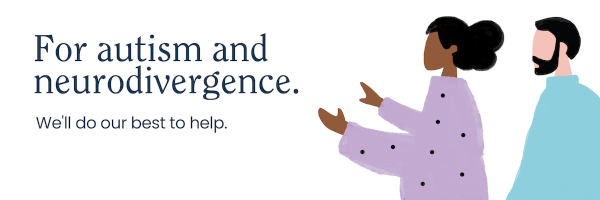Autism – Laying the foundation for success
Introduction
This first article in the Living Advice series is concerned with ensuring that we have the right foundations upon which to build our autism best practice and to support interventions and approaches.

One definition of a foundation refers to it being an anchor and providing a solid surface upon which to build.
In a world of quick fixes and instant solutions when supporting individuals with autism we are all at risk of being drawn in to trying interventions and approaches that offer a quick fix or an easy solution without having to do all the hard work of laying the foundations that will help ensure success.
Over many years of working with children and adults with autism I have learnt that what often works is taking time to lay the foundations, that is to ensure we have both the values and best practice in place to support what we do. In this article I explore some of the basics that help provide a firm foundation upon which we can build successful interventions and approaches.
The person with autism has a right to be consulted with and involved in all aspects of living their lives including what approaches and interventions are used
Underpinning all we do should be a commitment to seeking the views and opinions of the person with autism irrespective of their abilities and how autism impacts upon them. Whilst we may take this for granted in the past we might have often put approaches and strategies in place without consulting and actively involving the person with autism and then wondered why they were not successful. I will cover this area in more detail in a future article; however, for now it is worth considering and asking yourself the following:
1. What support and methods can we put in place to enable the person with autism to be fully involved, make comments and make real choices regarding their lives and the support they receive? This can include the use of photographs, symbols, video clips or one of the many Apps that are now available for smart devices.
2. How can we seek to identify the kind of approaches and methods the person with autism prefers and responds to positively? This involves being prepared to watch, listen, reflect and learn from them. This will mean paying attention to the looks, gesturers and actions that tell us what they are really feeling and wanting.
3. How can we create opportunities for the person with autism to experience themselves as choice makers and agents of change? It is only when the person with autism realises that their views make a difference to the support they receive that they will become motivated to greater involvement.
Every person with autism has existing strengths and abilities that can be built upon and developed
A second foundation principle is the belief that the person with autism possesses strengths and abilities that can be built upon and developed. I still find that there can be an emphasis upon what the person with autism can’t do as opposed to what they can do. I often think that if we were as enthusiastic about identifying and talking about the abilities and strengths of the person with autism as we are about their difficulties and weaknesses, we would be in a much better position to effectively support them. A starting place for organisations and individuals who support people with autism is to ensure that we:
1. Provide opportunities to discover and identify the strengths and abilities of those we support. This involves offering a wide range of experiences and activities that can help identify emerging skills and future strengths for the person with autism.
2. Develop and use assessment tools that concentrate on strengths as well as needs.
3. Have programmes that encourage the use of strengths and abilities and seek to use them to compensate for areas of need and difficulty.
Have high but realistic expectations and ambitions for the person with autism
It easy for us all to fall into the trap of assuming that the person with autism cannot do something or achieve rather than believing they can. Whilst a part of supporting a person with autism is dealing with the here and now, it is equally important to look forward. We need to ask what our ambitions are and what are theirs and what, with the right levels of support, they could achieve.
Understanding the individual person’s world and how they experience it
In organisations where understanding and experience of being with and supporting people with autism is limited or has a narrow focus, I often find there is a tendency to see all people with autism as being fundamentally the same and all requiring the same kind of approach.
A starting point for all interventions and approaches is an understanding of the individual person and how they experience the world and how they live their lives. This will include their sensory experiences, how they process information, their personal philosophy, what’s important to them and what makes them happy. The challenge for us is how to enable the person with autism to communicate the above and how we can be sufficiently flexible in our thinking to understand and respond to a different world.
Provide supportive environments
We can only provide a truly supportive environment for the person with autism if we have first tried to seek their views and opinions and done all we can to understand how they experience the world.
Supportive environments need to enable the person to function on a daily basis, offer the right level of safety and security, and provide meaning. Supportive environments will provide just the right levels of arousal and structure for the individual. Supportive environments also need to provide enjoyment and pleasure and be places where the person with autism want to be.
Supporting communication and interaction

Whilst there are many books and articles written on communicating with people with autism, when laying the foundations for success I believe the following needs to be considered.
1. Communication approaches are based upon sound assessment and what works for the individual rather than current trends and those methods preferred by the organisation.
2. The person with autism has in place the right support to make their communication and interaction as successful as possible and these are available across their lives and implemented consistently.
3. Staff are trained and have an enthusiasm and passion for communicating with the person with autism.
4. We make communication and interaction worthwhile for the person with autism.
Making the most of and supporting sensory processing differences
 The last few years have seen a greater emphasis upon the sensory experience of people with autism. There has also been a growth in specialist interventions and therapies. Whilst much of this is welcomed and has resulted in an improvement in the quality of life for the person with autism there is still a need for greater understanding of how sensory differences impact upon daily living.
The last few years have seen a greater emphasis upon the sensory experience of people with autism. There has also been a growth in specialist interventions and therapies. Whilst much of this is welcomed and has resulted in an improvement in the quality of life for the person with autism there is still a need for greater understanding of how sensory differences impact upon daily living.
There is also a need to emphasise the positive aspects of seeing and experiencing the world differently to others. At a foundation level we need to ensure that those supporting the individual with autism have a sound knowledge and understanding of how sensory processing impacts upon the person.
We need to ensure:
- that sensory profiles and plans are in place for all who need them;
- that environments are designed and modified in accordance with the individual’s needs in mind; and
- that people with autism are not subjected to approaches and gadgets that are not based upon sound and ethical research.
Provide meaningful structure
At the heart of most successful approaches to supporting individuals with autism is providing the required levels of structure. This needs to be arrived at by careful assessment and observation and will vary according to the environment and activity being undertaken. The level of structure will also be dependent upon levels of stress and anxiety. Careful assessment will also help avoid the one-fits-all approach to structure that can be found in some organisations. Consideration should be given to structuring activities, environments, transitions, our interaction and communication. Structures can be provided in a variety of ways including:
- checklists,
- schedules,
- visual time tables,
- prompts on mobile devices and
- social scripts.
Provide meaningful activity
I am privileged to meet a large number of children and adults with autism who are as happy, successful and as content as any other person. One of the common factors in their lives is that they are supported to engage in regular activities that are purposeful and meaningful to them. The opposite is also true of individuals with autism who, on a regular basis, experience difficulties and high levels of stress. Of course, there are also other factors involved for both groups.
Meaningful activities are usually around the person’s strengths, abilities, passions and what they value. When supporting people with autism we should seek to combine individual meaningful activities together to make meaningful programmes and ways of living life. Such programmes will include social, life, personal, leisure and activates that are simply engaged in because they bring pleasure and are fun. We can discover what is meaningful for the individual with autism by sensitively encouraging them to sample a wide range of activities and experiences and assessing their reactions.
A commitment to supporting happiness and wellbeing
In recent years there has been a greater emphasis upon promoting happiness and wellbeing for people with autism. Whilst considerable work is still needed to make this a reality, underpinning all that we do should be our aim for more individuals with autism to experience happiness and wellbeing.
Earlier we talked about the need to identify the strengths of individuals with autism. We also need to develop tools for identifying what makes people with autism happy and contributes to their sense of wellbeing. This commitment to supporting greater levels of happiness and wellbeing may well mean doing things differently and having a different set of priorities. It will certainly mean paying more attention to health issues, personal fitness, being able to advocate for yourself. This area will be discussed in more detail in a future article.
Having a holistic approach to behaviour which challenges
Behaviour that challenges organisations and individuals supporting people with autism is seldom a result of single factors and therefore any effective strategy is likely to address all the relevant factors. Such an approach is likely to include:
- addressing our part in the behaviour,
- assessing the behaviour,
- assessing the impact of the autism,
- taking into account sensory factors,
- focusing on health and wellbeing, and
- teaching new behaviours.
I will be producing an advice sheet on holistic approaches to behaviour that challenges.
Conclusions
In this brief article I have suggested that successful interventions and approaches need to be built upon a solid foundation that includes involving the person with autism in all aspects of their support. It also means providing structure, meaningful activities, support for communicating and interaction and sensory processing. Each of these areas will be covered in future advice sheets.



